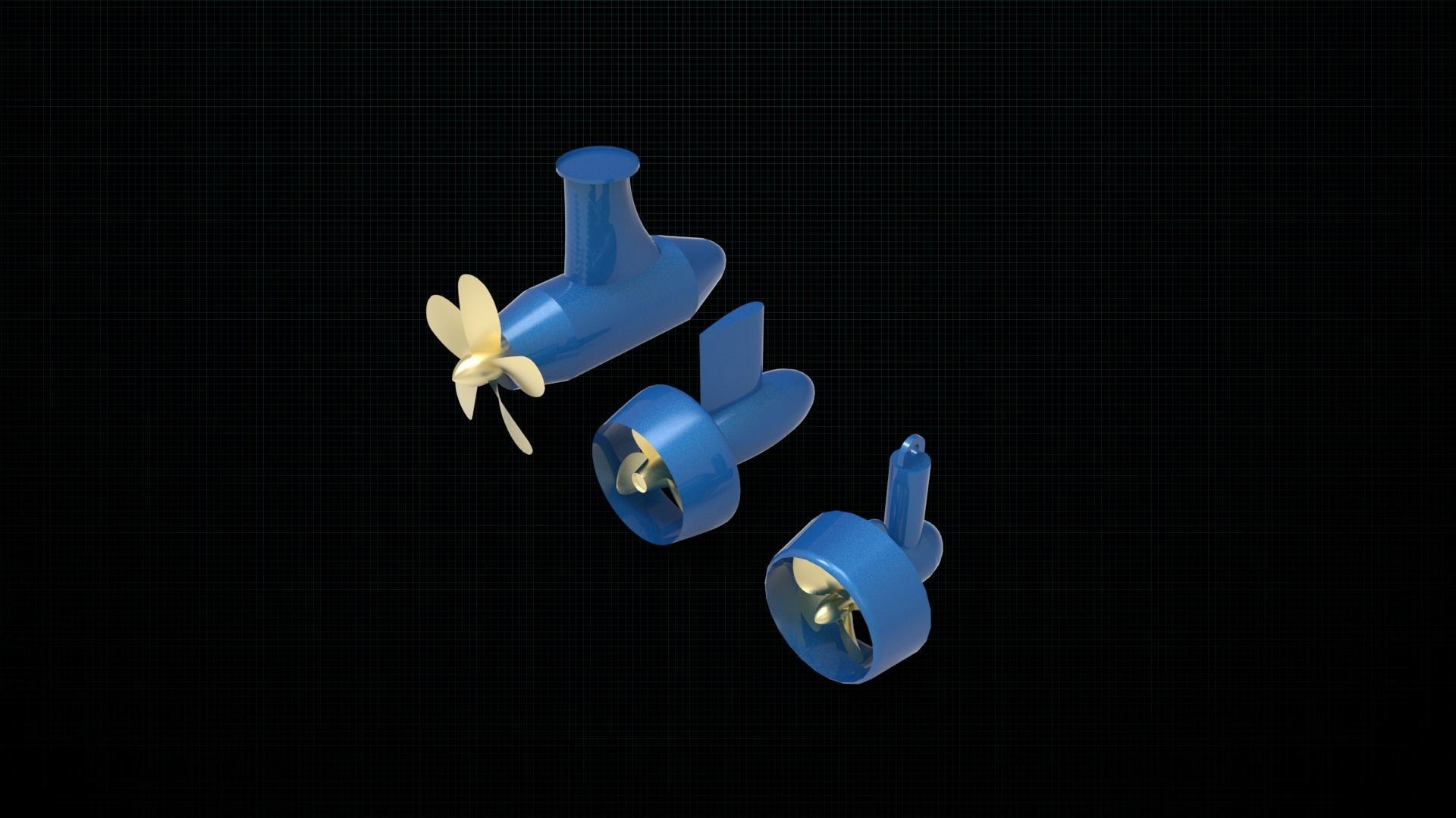
Azipod thruster ship 3D model
In the conventional azimuth thrusters such as Z-drive and L-drive thrusters, the propeller is driven by an electric motor or a diesel engine inside the ship's hull. The propeller is coupled to the prime mover with shafts and bevel gears that allow rotating the propeller about a vertical axis. This type of propulsion system has a long tradition throughout the 1990s and today such propulsion units are produced by a number of companies around the world.[5]
In the Azipod unit, the electric motor is mounted inside the propulsion unit and the propeller is connected directly to the motor shaft.[6] Electric power for the propulsion motor is conducted through slip rings that let the Azipod unit rotate 360 degrees about the vertical axis.[7] Because Azipod units utilize fixed-pitch propellers,[8] power is always fed through a variable-frequency drive or cycloconverter that allows speed and direction control of the propulsion motors.[9]
The pod's propeller usually faces forward because in this pulling (or tractor) configuration the propeller is more efficient due to operation in undisturbed flow. Because it can rotate around its mount axis, the pod can apply its thrust in any direction. Azimuth thrusters allow ships to be more maneuverable and enable them to travel backward nearly as efficiently as they can travel forward. In order to for the full capabilities of podded propulsion units to be realized in commercial service, shiphandling training on simulators and manned models is required for the crew.[10]
The podded design typically achieved a 9% better fuel efficiency than the conventional propulsion system when it was first installed in the 1990s. In the meantime, improvements to the conventional designs have shrunk the gap to 6%–8%, but on the other hand the hydrodynamic flow around the Azipod has been improved by fin retrofits and a dynamic computer optimization of the respective operating angles of the pods in multipod installations, thereby yielding overall efficiency improvements now in the range of 18%








